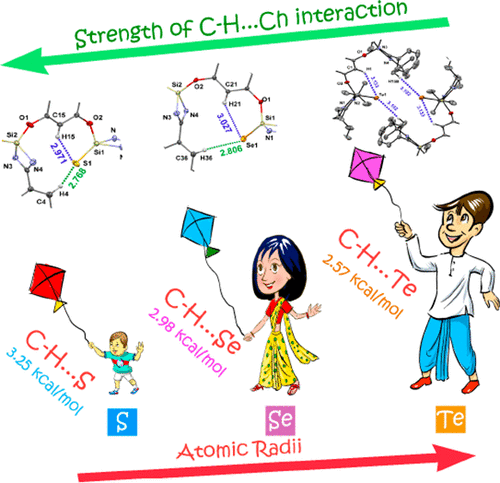当前位置:
X-MOL 学术
›
Inorg. Chem.
›
论文详情
Our official English website, www.x-mol.net, welcomes your
feedback! (Note: you will need to create a separate account there.)
Bis(silanetellurone) with C–H···Te Interaction
Inorganic Chemistry ( IF 4.3 ) Pub Date : 2020-11-20 , DOI: 10.1021/acs.inorgchem.0c03098 Moushakhi Ghosh 1 , Prakash Panwaria 1 , Srinu Tothadi 2 , Aloke Das 1 , Shabana Khan 1
Inorganic Chemistry ( IF 4.3 ) Pub Date : 2020-11-20 , DOI: 10.1021/acs.inorgchem.0c03098 Moushakhi Ghosh 1 , Prakash Panwaria 1 , Srinu Tothadi 2 , Aloke Das 1 , Shabana Khan 1
Affiliation

|
Herein, we report the synthesis of a series of bis(silanechalcogenones) [Ch = Te (2), S (3), or Se (4)] using an N-heterocyclic silylene-based SiCSi pincer ligand (1). 2 is the first example of a bis(silanetellurone) derivative. The bonding patterns of 2–4 were extensively studied by natural bond orbital, quantum theory of atoms in molecules, and noncovalent interaction index analyses, and these exhibit weak C–H···Ch interaction. The analogous reaction of 1 with trimethyl N-oxide produced a novel bis(cyclosiloxane) derivative (5). All of the complexes are duly characterized by single-crystal X-ray diffraction studies, multinuclear nuclear magnetic resonance (1H, 13C, and 29Si) spectroscopy, and high-resolution mass spectrometry.
中文翻译:

C–H···Te相互作用的双(硅氢睾酮)
在这里,我们报告使用N-杂环亚甲硅烷基SiCSi钳形配体(1)合成一系列双(硅烷硫属酮)[Ch = Te(2),S(3)或Se(4)] 。图2是双(硅氢睾酮)衍生物的第一个例子。通过自然键轨道,分子中的原子量子理论和非共价相互作用指数分析,广泛研究了2–4的键合模式,这些键表现出弱的C–H···Ch相互作用。1与三甲基N-氧化物的类似反应生成了新的双(环硅氧烷)衍生物(5)。所有的配合物都通过单晶X射线衍射研究,多核核磁共振(1 H,13 C和29 Si)光谱和高分辨率质谱进行了适当表征。
更新日期:2020-12-07
中文翻译:

C–H···Te相互作用的双(硅氢睾酮)
在这里,我们报告使用N-杂环亚甲硅烷基SiCSi钳形配体(1)合成一系列双(硅烷硫属酮)[Ch = Te(2),S(3)或Se(4)] 。图2是双(硅氢睾酮)衍生物的第一个例子。通过自然键轨道,分子中的原子量子理论和非共价相互作用指数分析,广泛研究了2–4的键合模式,这些键表现出弱的C–H···Ch相互作用。1与三甲基N-氧化物的类似反应生成了新的双(环硅氧烷)衍生物(5)。所有的配合物都通过单晶X射线衍射研究,多核核磁共振(1 H,13 C和29 Si)光谱和高分辨率质谱进行了适当表征。











































 京公网安备 11010802027423号
京公网安备 11010802027423号